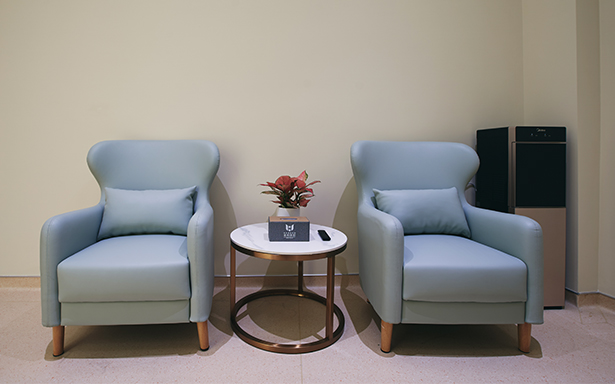Before the 1980s, the production of medical furniture was basically the same as that of ordinary furniture, and medical furniture was just a small branch of office furniture. With the development of modern medical technology, people gradually began to pay attention to the functionality of medical furniture and the design of hospital building space environment. Therefore, medical furniture has gradually become a unique category in the furniture industry with strong functionality, high quality requirements and a wide variety of categories.

The design of medical furniture involves many parameters such as ergonomics, color aesthetics, material characteristics and functional requirements. Compared with other civilian furniture, medical furniture has higher requirements in terms of safety, humanization, corrosion resistance, wear resistance and durability. So, with the increasing demand for personalized medical furniture, how can we design medical furniture that meets market demand? Combining the development trend of medical furniture design at home and abroad, it is summarized that the following six design principles should be followed.

1. Environmental protection principle
Medical furniture is closely related to human health, and environmental protection is the primary criterion for evaluating qualified medical furniture. Therefore, the selection of medical furniture must give priority to its environmental protection. In the design stage, the environmental protection of the product must be considered from the design, material selection, manufacturing, transportation, installation and use of the product.
1. Design and material selection: Material selection must comply with the relevant national testing standards, reduce the free formaldehyde content in the material, and reduce harmful substances in furniture. At the same time, materials that save energy, have low consumption, low pollution, and are easy to reuse should be selected, that is, in line with the "3R" concept of reduction, reuse, and recycling.
2. Processing: In the processing of medical furniture, in addition to considering the low pollution, low energy consumption and ease of processing of materials and processing, its structural process must also be considered to avoid secondary pollution of materials and products by harmful substances such as formaldehyde during processing.
3. Transportation and installation: The use of modular design or disassembly and assembly structure design is conducive to saving resources during transportation and facilitating product installation and maintenance.

2. Functionality principle
The functional design of medical furniture includes material functional design and spiritual functional design.
Material function design: refers to the functional design that the product itself needs to meet, such as sitting, lying, leaning, storage, etc. At the same time, the processing technology, industrial production, and the design of easy handling, stacking, folding, disassembly, etc. should also be considered. According to the use needs of different departments, special functional designs should be met. For example, barrier-free design, knee space, medical gas logistics pipeline layout, etc.
Mental function design: refers to satisfying people's psychological needs and making people feel happy when using it. Different designs can be made in terms of color matching, material selection, and shape for different areas, so that patients can relieve their nervous emotions from a psychological and spiritual level.

3. Safety Principle
Most people who go in and out of hospitals are in poor health. Compared with healthy people and other environments, the medical furniture selected by hospitals should pay more attention to the product's structural stability, firmness, and absence of sharp corners and dangerous factors. At the same time, the design of medical furniture products must be easy to clean to facilitate the effective prevention and control of hospital infections.

4. Principle of Adaptability
Adaptability means that hospital furniture is designed from the perspective of meeting the needs of the entire life cycle of medical facilities to meet the needs of future hospital development. Therefore, medical furniture adopts modular and standardized design to improve the scalability of its products, flexibly realize different shapes and splicing, and at the same time improve product production efficiency and quality, and save costs.

5. Principle of spatial matching
Medical space is a variety of diagnosis and treatment spaces composed of architectural space, medical furniture and medical facilities according to medical functions. The size, lighting, temperature, ventilation, sound of each space and the type and location, color and material of medical furniture should be reasonably arranged. As one of the "protagonists" of medical space, the design of medical furniture should be closely integrated with the overall environmental design of the hospital to meet the needs of medical work to the greatest extent and establish a warm, comfortable and convenient diagnosis and treatment environment centered on patients.

6. Humanization principle
The "people-oriented" design concept has become a design trend. As equipment that is in close contact with patients in the diagnosis and treatment environment, the humanized design of medical furniture is particularly important. The humanized design of medical furniture is not only convenient for doctors and patients to use, but will also better improve the hospital's healing environment and diagnosis and treatment services.
The humanized design of medical furniture should be understood from two dimensions: one is from the perspective of psychology, that is, the design respects and satisfies people's psychological, physiological needs and spiritual pursuits, and the design respects human nature and shows humanistic care; the other is from the perspective of the spatial relationship between people and furniture and other items and their composition, that is, from the perspective of ergonomics.






 400-9600-778
400-9600-778 








